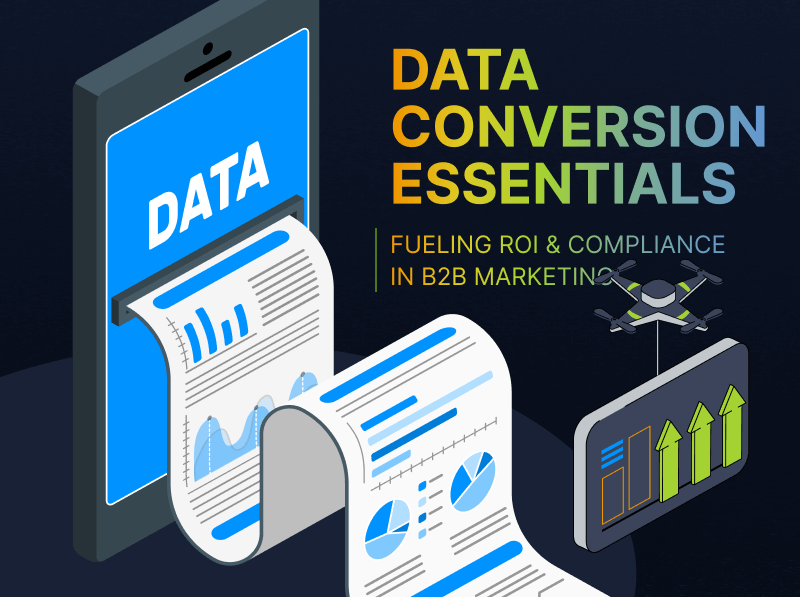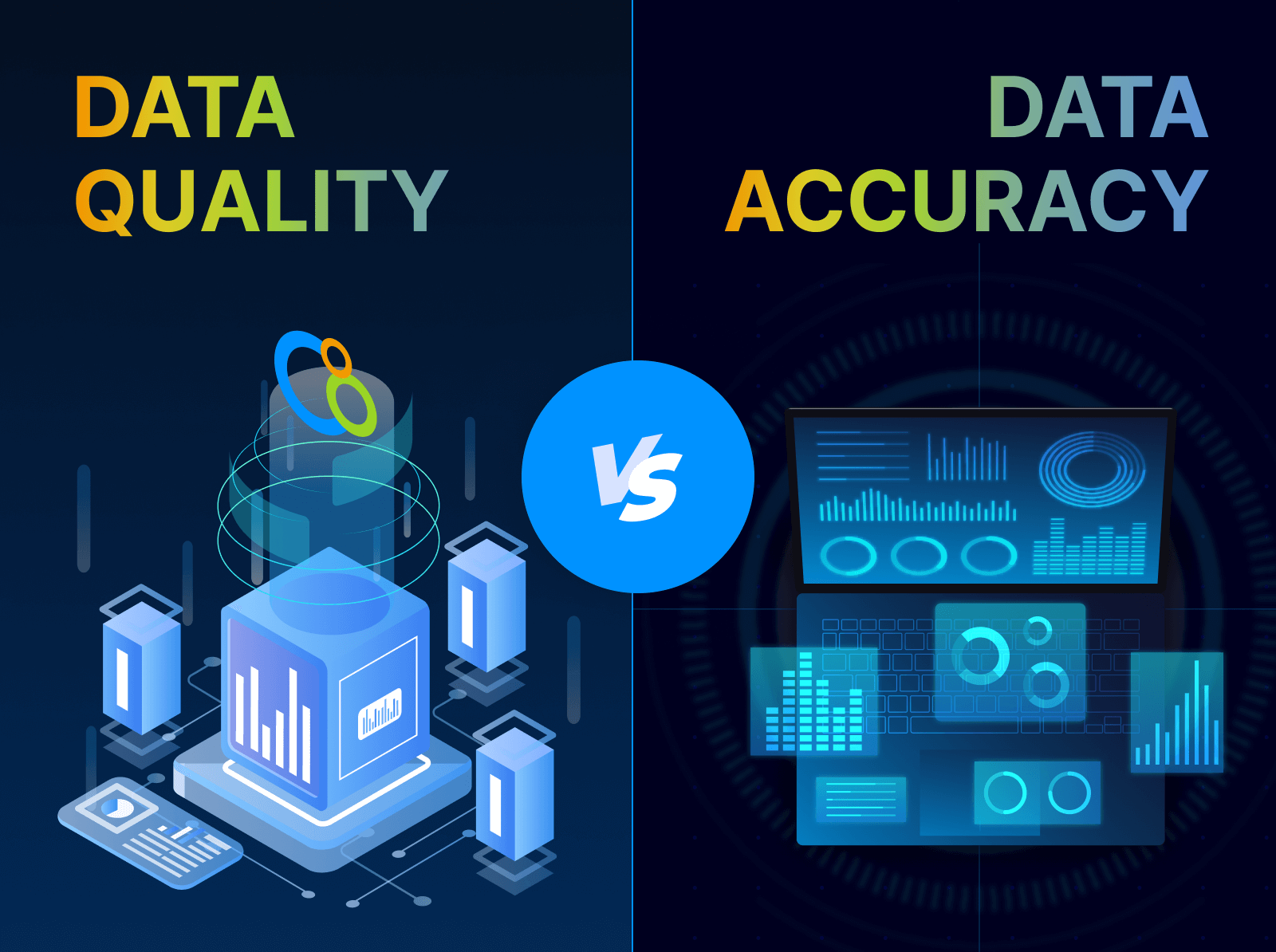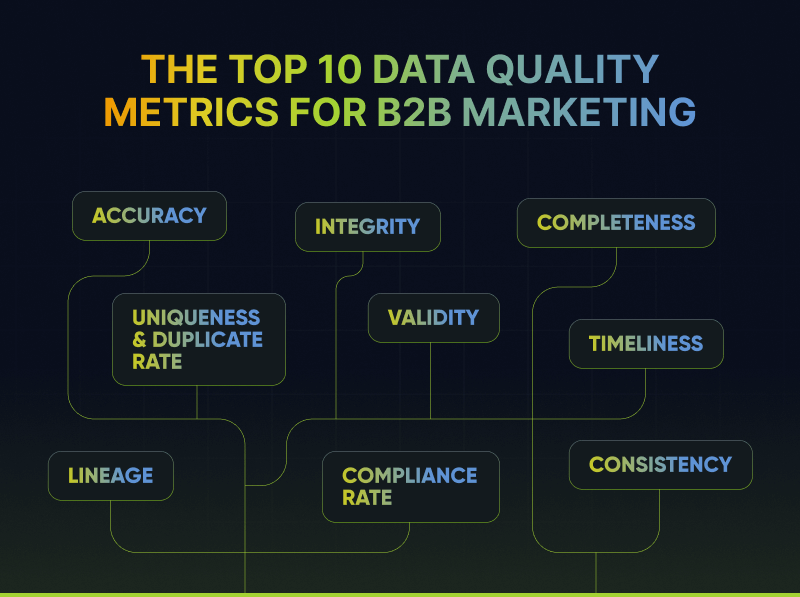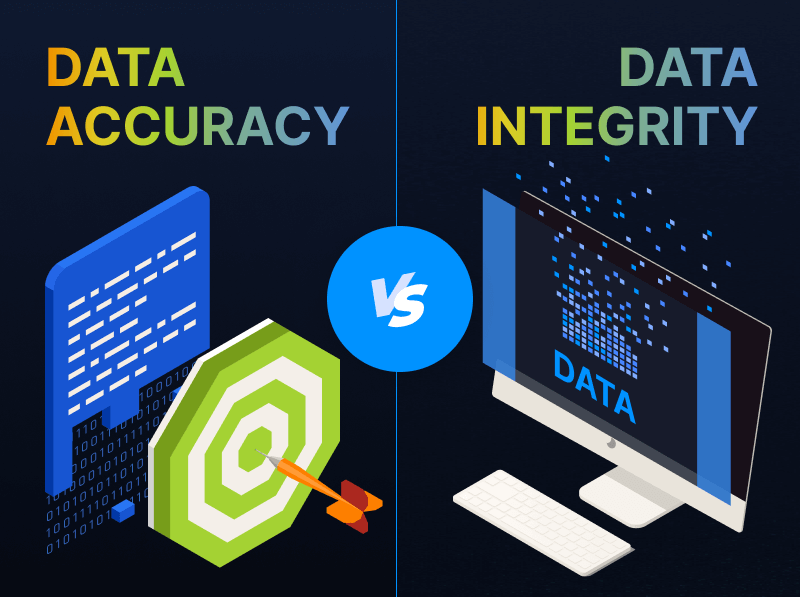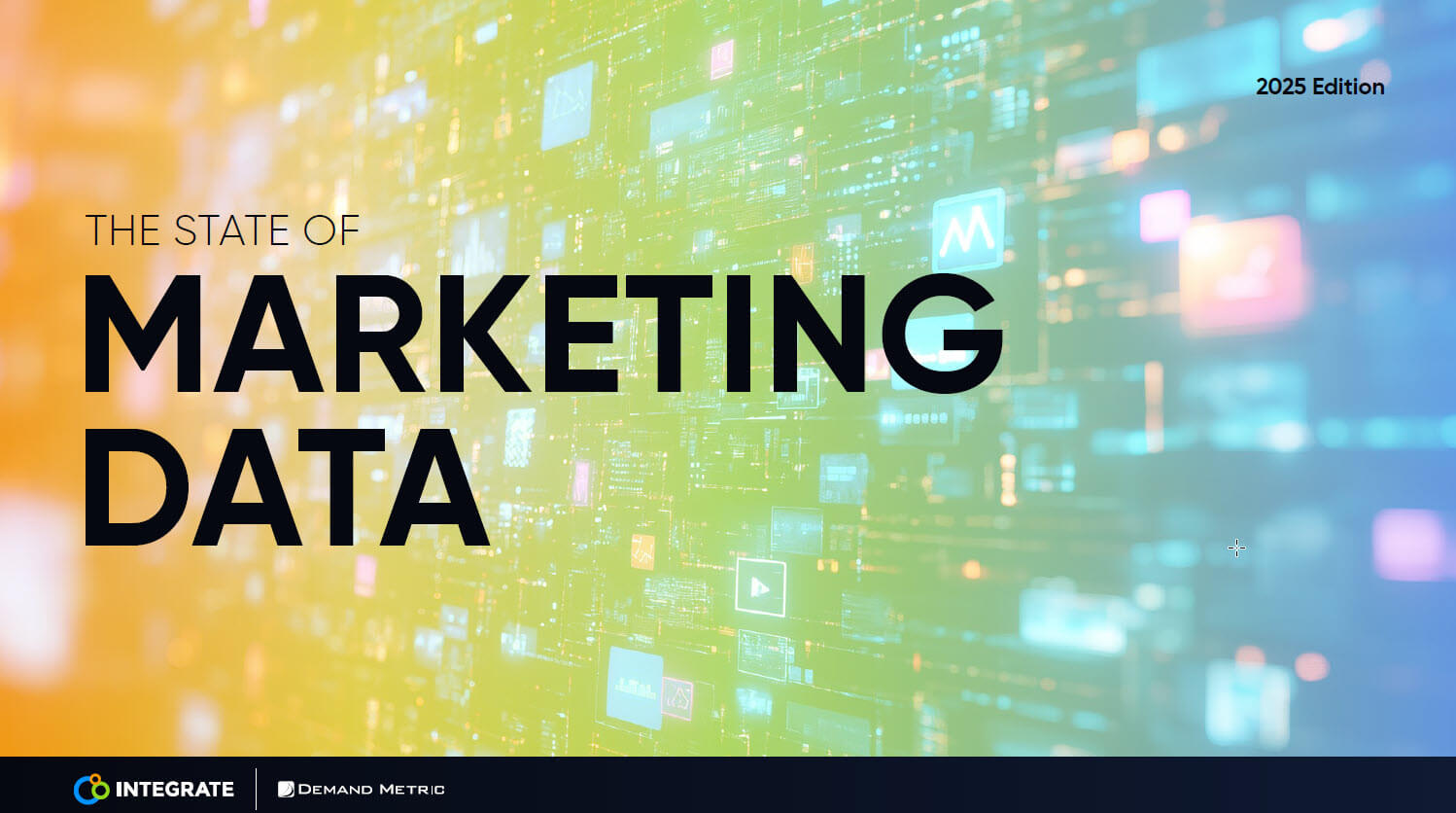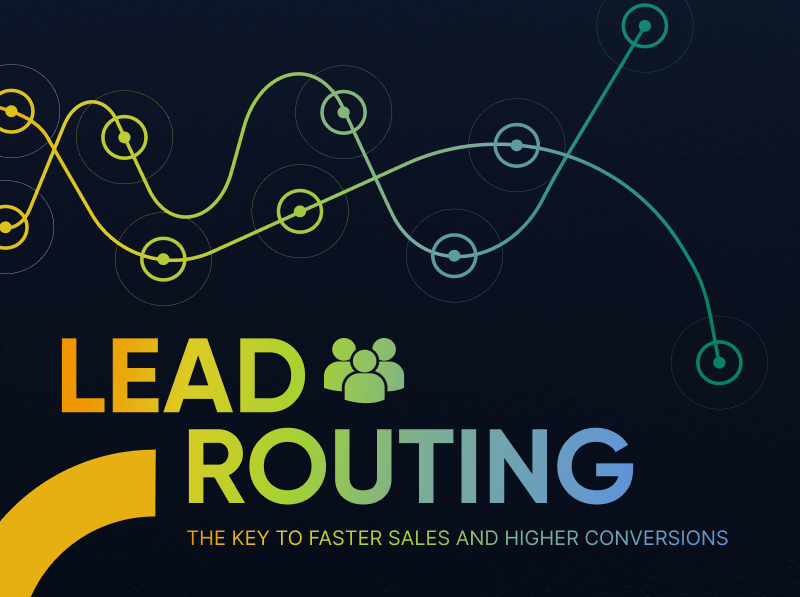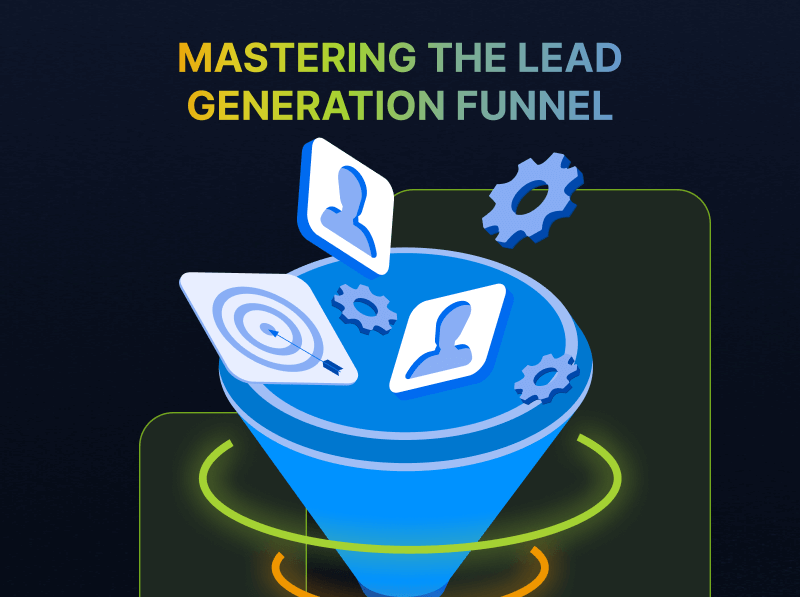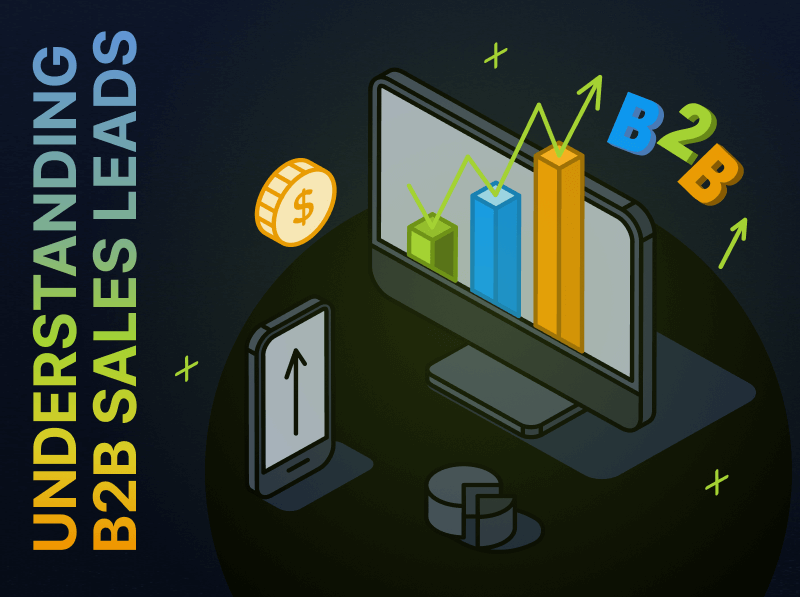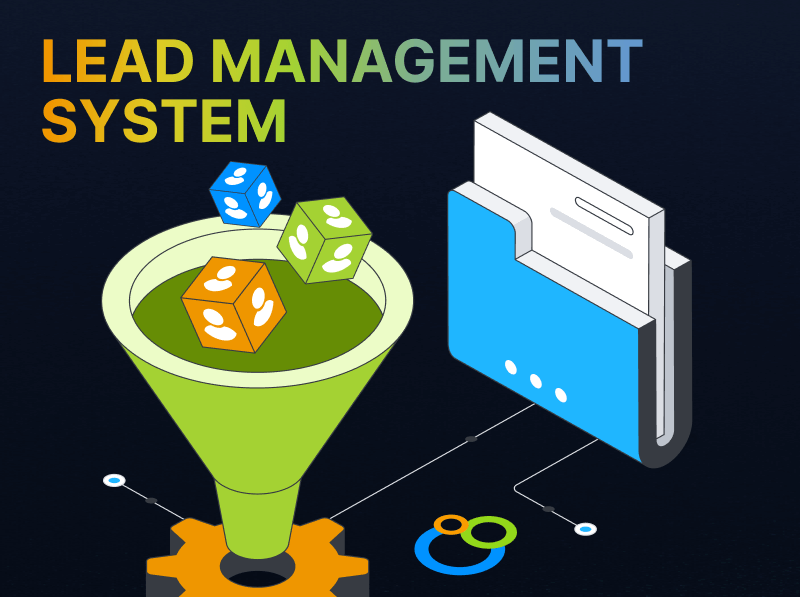Data Conversion Essentials: Fueling ROI & Compliance in B2B Marketing
In B2B marketing, data often arrives in every shape and size—whether it’s coming from content syndication, webinars, digital ads, or organic web traffic. You might have the best campaigns planned, but if the lead data you capture isn’t uniform and accessible, you’ll end up with bottlenecks in your marketing automation platforms (MAPs) and CRMs. Chaotic, messy, mismatched data: a frequent headache for marketing teams, but it doesn’t have to be this way.
That’s where data conversion comes in. By systematically transforming and standardizing lead records from disparate sources, your marketing team ensures each record is privacy-compliant and fully ready for follow-up. Without a cohesive strategy, data inconsistencies lead to inaccurate reporting, clunky handoffs to sales, and ultimately missed revenue opportunities.
In this blog, we’ll explore the key concepts behind data conversion, share common techniques for structuring and normalizing marketing data, and examine how data conversion supports B2B marketing operations and demand generation workflows.
What Is Data Conversion?
Data conversion is the process of translating data from one format to another without losing its meaning. Modern marketing teams capture information from an ever-growing array of channels—spanning online forms, marketing automation platforms, CRM systems, publishers and content syndication providers, event management platforms, social media tools, spreadsheets, enterprise resource planning (ERP) solutions, and more. Each channel often uses its own data structures—one might record names and addresses as a single string, while another system needs them in separate fields—while different naming conventions or accepted values (e.g., multi-select vs. text boxes) can complicate data usage. Such format disparities pose a major challenge, requiring a systematic approach to unify and standardize the data so it can be used effectively across the organization.
Data conversion bridges these differences by performing a structured transformation of the data into a format compatible with a target system or standard. This transformation can be as simple as changing date formats (e.g., from “MM/DD/YYYY” to “DD-MM-YYYY”) or as sophisticated as unifying thousands of data points from multiple silos into a standardized database for analytics.
Where Data Conversion Fits into the Broader Ecosystem
As organizations rely on integrated marketing and sales technologies to optimize their operations, data conversion is like a translator ensuring each platform recognizes the information it receives. When datasets grow in size and complexity, data conversion becomes increasingly critical for:
- Improving speed to lead and pipeline velocity by promptly converting inbound lead data so sales can engage faster
- Ensuring consistent reporting, so that every system interprets data uniformly
- Feeding accurate information into advanced analytics or machine learning models
- Reducing errors and duplicates caused by inconsistent formats
- Maintaining compliance with privacy regulations by mapping consent fields and personal data correctly
- Fostering data quality and trust between sales and marketing through consistently standardized information
Data Conversion Techniques
Effective data conversion can involve one or more of the following techniques:
- Field Mapping & Normalization
Mapping fields from a source to a target system is one of the core steps in data conversion. For instance, a field labeled “full_name” in a CSV file might need to be split into “first_name” and “last_name” in a CRM. Normalization includes standardizing certain data points (e.g., job titles, addresses, or phone formats) so the data is consistent across all systems. - Type & Format Conversion
Different systems can store the same data in different types (such as text vs. numeric) or formats (like date vs. date-time). A type conversion changes data types so that the target system can properly process the information. For example, converting a stored string “10/15/2025” into a recognized date format. This can also involve changing text encodings (e.g., from ASCII to UTF-8) to handle special characters in multi-lingual data. Type and format data conversion can get complicated, see the section below for a deeper dive into type and format conversion.* - Data Cleansing & Validation
Many data conversion workflows include a cleansing stage where invalid or corrupt information is flagged or corrected. For instance, if an email address doesn’t have an “@” symbol, it would be considered invalid. Validation rules weed out data that fails to meet a system’s requirements and can correct common issues, like trailing spaces or incomplete entries. - Deduplication
When merging multiple data sources, duplicates inevitably crop up. Data conversion processes often include a step to find and remove duplicates. This yields more reliable insights and a clearer view of customers or leads. - Enrichment
In more advanced processes, data conversion may also include enrichment, which supplements existing records with new information from external data providers. This not only aligns formats but also increases the overall value of the resulting data. - Batch vs. Real-Time Processing
Some organizations run data conversion tasks in scheduled batches so their systems can process large volumes of data. Others require real-time conversion, in which data is transformed on the fly as soon as it’s captured. Real-time processing is increasingly common in lead management, where sales teams want immediate access to accurate, formatted data about new leads.
*Deeper Dive into Type & Format Conversion
To help marketing ops professionals handle data consistently, it’s important to look closely at how type and format differences arise, and how to address them:
- Primitive Data Types: One system may treat a phone number or revenue field as a string, while another expects a numeric format. If these don’t match, the data can be rejected or misinterpreted.
- Encoding & Character Sets: Converting between ASCII and UTF-8 is key when storing special characters or supporting multiple languages. Failure to handle encoding changes can produce garbled text.
- Locale & Regional Differences: Marketers often deal with multiple date and currency conventions (e.g., “MM/DD/YYYY” vs. “DD/MM/YYYY”), so ensuring consistent formatting is critical for accurate reporting.
- Downstream Integrations: Analytics platforms or AI models require specific data types for accurate calculations—if the CRM logs “12,000” with a comma, but your analytics tool expects “12000,” you’ll need to strip out punctuation.
- Manual vs. Automated Conversion: Some marketing ops teams rely on manual mapping or spreadsheets, while others use scripts or lead management solutions to systematically detect and fix type/format mismatches.
Integrate’s lead management platform can help accomplish your data conversion strategy!
Benefits of Data Conversion
When done right, data conversion can have a significant impact on everyday operations and long-term strategic goals.
- Better Decision-Making: Clean, unified data is more trustworthy, so teams can confidently make data-driven decisions, whether it’s budgeting for campaigns or planning expansions.
- Enhanced Operational Efficiency: Automated data conversion tasks save teams from having to manually reformat or re-enter data. This time can then be spent on more strategic work.
- Streamlined Compliance: Regulations like GDPR and CCPA make it crucial to capture, store, and process data properly. Consistent data mapping ensures privacy preferences remain intact.
- Improved Analytics & Reporting: Inconsistent data formats can skew analysis, but well-executed data conversion helps you maintain integrity for more reliable insights.
- Scalability & Future-Proofing: As organizations grow, data demands grow with them. A robust conversion framework allows you to bring new tools and platforms into the ecosystem without disrupting workflows.
- Stronger Collaboration Across Teams: When data is stored in compatible formats, different departments—from marketing to finance—can access and interpret the same information, reducing silos and friction.
Putting Data Conversion to Work
In practice, data conversion is the behind-the-scenes backbone that supports data integration across a business, particularly in B2B marketing contexts. By ensuring lead data from multiple channels is standardized, data conversion not only keeps existing systems running smoothly but also enables more advanced data strategies:
- Account-Based Marketing (ABM): Standardizing firmographic data across channels allows you to precisely identify target accounts, unify buying group information, and deliver highly personalized outreach at scale.
- Personalized Customer Engagement: Converting data from diverse sources (social media, email sign-ups, CRM records) into a unified profile so marketing can tailor campaigns to each prospect’s interests or funnel stage.
- Lead Management: Transforming leads from multiple inbound channels into standardized records for a CRM, so sales can follow up quickly without confusion over mismatched fields.
- AI & Advanced Analytics: Providing machine learning models with consistently formatted data enhances lead scoring accuracy, pipeline forecasting, and next-best-action recommendations.
- Global Expansion: Converting data to international standards (e.g., currency formats or address schemas) allows organizations to operate in new regions without re-architecting existing systems or losing track of localized compliance.
In B2B demand generation, these benefits translate into faster speed to lead, improved pipeline velocity, and a more seamless marketing-to-sales handoff. Teams that invest in robust data conversion practices see higher-quality leads, stronger attribution, and better alignment across marketing ops, demand gen, and revenue teams.
How to Start Your Data Conversion Strategy
For B2B marketing operations and demand generation, getting started with data conversion requires a structured plan and the right tools. Here’s how to build a successful data conversion strategy so you can turn your data chaos in clarity:
- Audit Your Lead Sources & Data Inputs: Identify all channels generating lead data (content syndication, events, webinars, social, etc.) and note how each source structures or formats fields. Pinpoint common issues such as missing fields, inconsistent values, or duplicates.
- Define Standard Data Fields & Formatting Rules: Create a data dictionary that specifies which fields are mandatory, acceptable field formats, and naming conventions. This step ensures alignment across marketing and sales systems.
- Select the Right Data Conversion Tools: Evaluate options like iPaaS solutions, marketing automation platforms, and lead management platforms (e.g., Integrate) to automate field mapping, data validation, and transformation. ETL (Extract, Transform, Load) tools can assist with deeper transformations and migrations for large-scale datasets.
- Automate Data Cleansing, Validation & Enrichment: Implement automated checks to correct or flag erroneous entries, verify email/phone formats, and enrich leads with additional insights (firmographics, demographics, etc.).
- Align Data Conversion with Lead Routing & Segmentation: Use clean, standardized data to drive proper segmentation and routing rules, ensuring leads are directed to the right campaigns or reps.
- Monitor, Measure & Optimize Your Data Conversion Strategy: Track metrics such as lead rejection rates, data hygiene scores, and conversion times. Continually refine processes to accommodate new channels and improve speed to lead.
By implementing these steps, marketing teams can ensure that data conversion is not just a one-time project but an ongoing strategy that fuels better lead management, stronger attribution, and faster pipeline acceleration.
Conclusion
Data conversion is an essential process that ensures data from different formats and sources can be integrated into a cohesive framework. By systematically converting, cleansing, and validating data before it enters core systems, businesses reduce errors, streamline regulatory compliance, and pave the way for more advanced data-driven initiatives. Whether you’re looking to unify lead data, support AI-driven analytics, or simply maintain consistent records, investing in robust data conversion practices pays off by turning chaos into clarity in the form of accuracy, efficiency, and ultimately, more meaningful insights.
Additional Resources:
